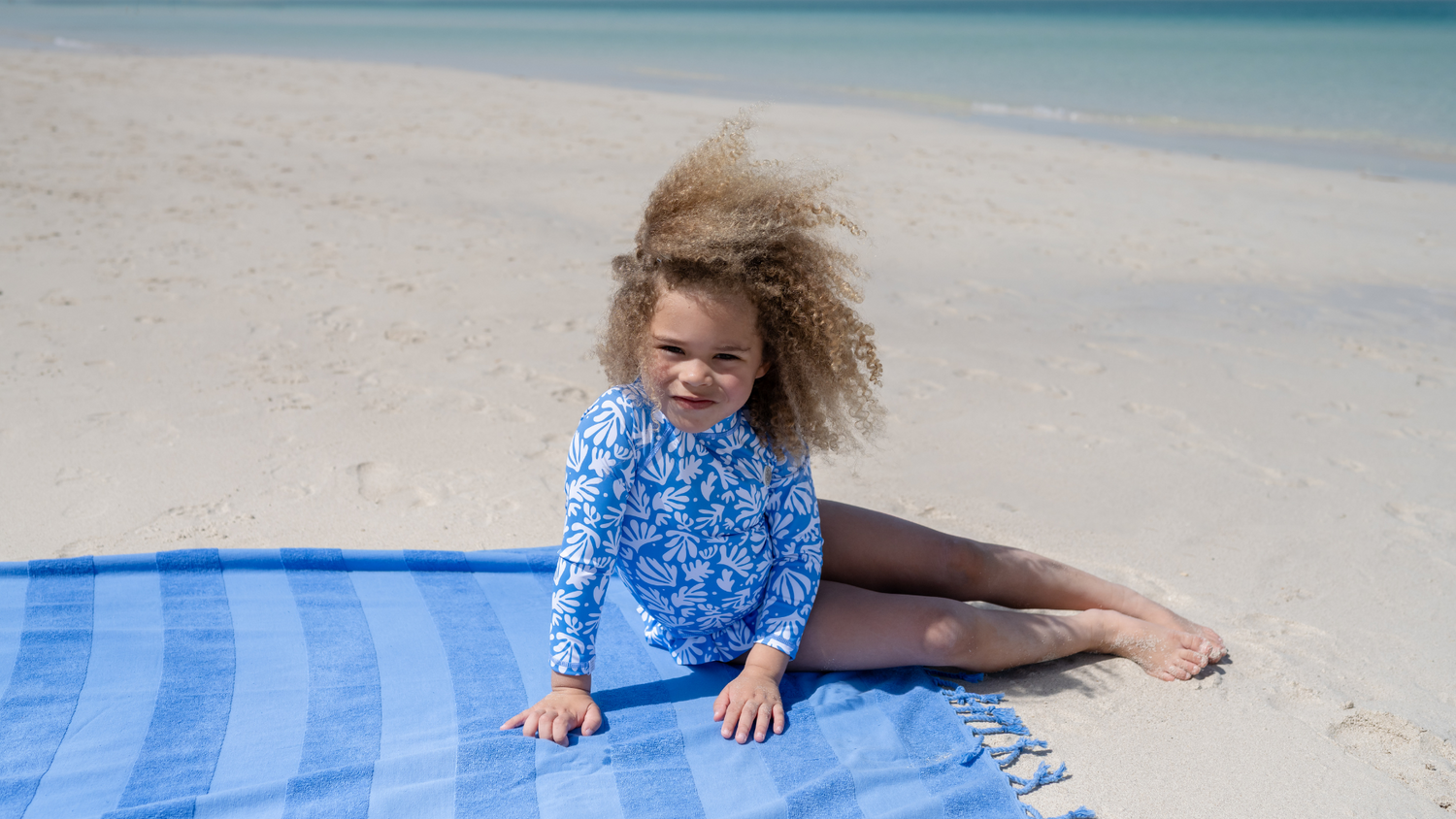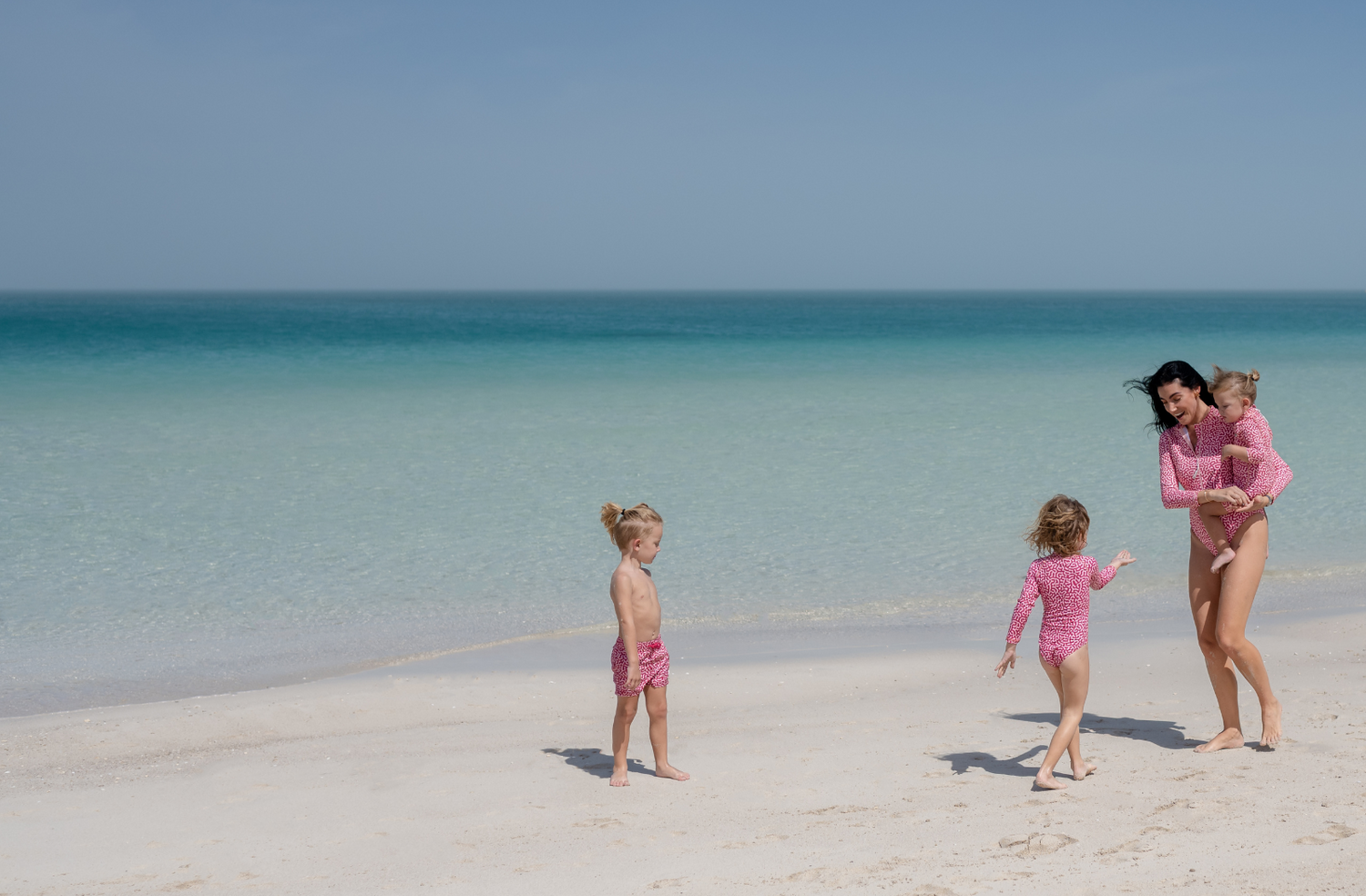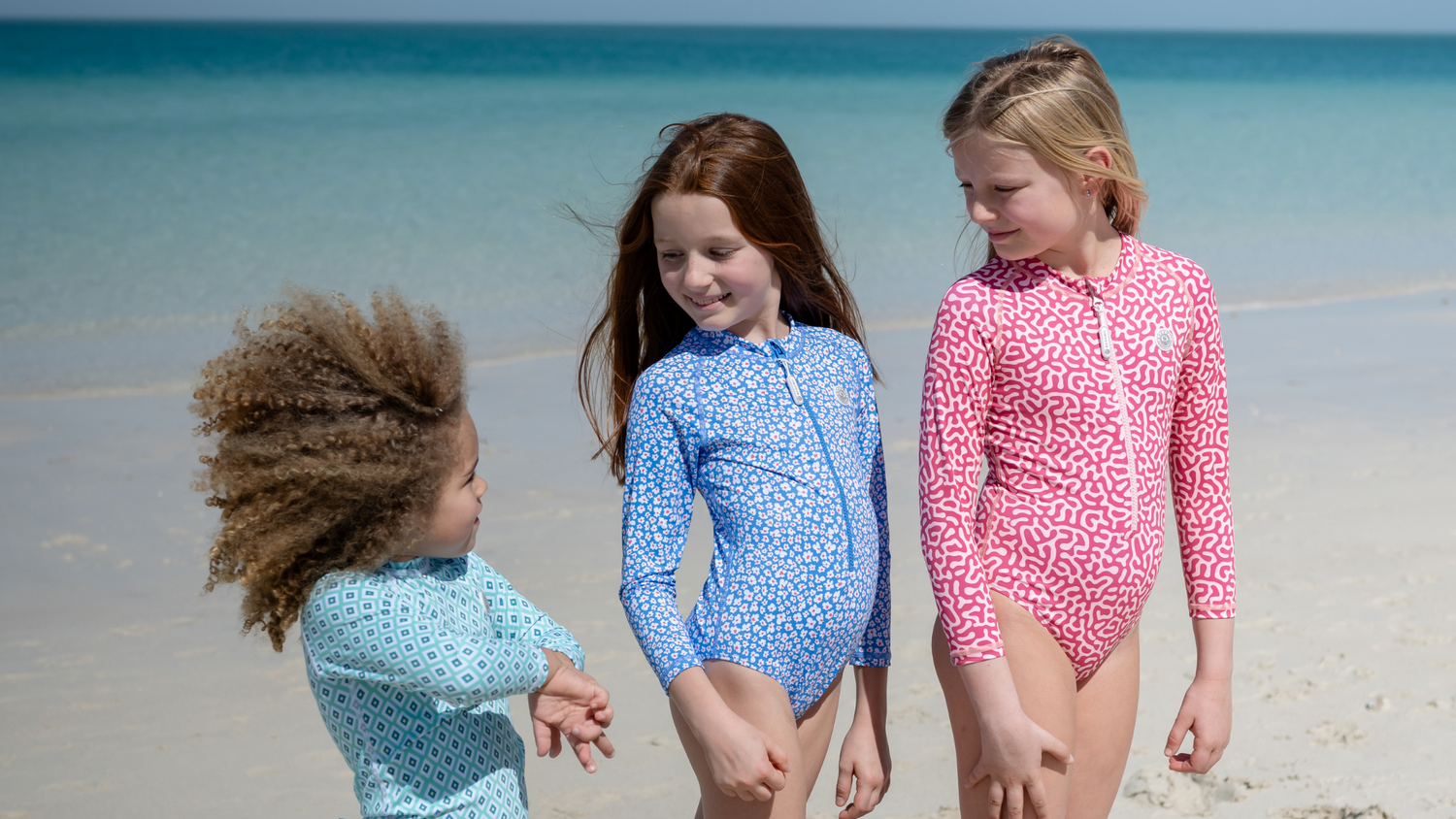Tips for a Safe and Fun Summer
 Before exposing your little ones to the sun, it is essential to understand the risks of inadequate sun exposure: sunburn, increased risk of skin cancer and photo aging, among others.
Before exposing your little ones to the sun, it is essential to understand the risks of inadequate sun exposure: sunburn, increased risk of skin cancer and photo aging, among others.
Information and education for children is crucial for effective protection and for creating healthy sun exposure habits.

Summer invites us to enjoy the outdoors, but it also reminds us of the importance of protecting our skin from the sun. In this article, we will explore the different aspects of solar radiation and how it affects our children's skin while they are enjoying the sun.
Understanding Solar Radiation
Solar radiation is the energy that comes from the sun and reaches the Earth in the form of light and heat. This radiation is made up of different types of light, including visible light that allows us to see, and ultraviolet (UV) light that can be harmful to our skin. Excessive exposure to UV radiation can cause sunburn, premature skin aging, and increase the risk of skin cancer. Therefore, it is important to protect yourself from the sun with sunscreen, appropriate clothing, and avoiding exposure during the hours of greatest solar intensity.
Time to Play! The UV Index and the Best Times to Go Outside
The UV Index is an international standard measure of the intensity of ultraviolet (UV) radiation from the sun reaching the Earth's surface at a given time and location. It is used to inform the public about the risk of UV exposure and to help plan safe outdoor activities. It is calculated based on the amount of UV radiation reaching the Earth relative to the ability of human skin to resist it.
UV Index levels range from low (0-2) to extremely high (11+), indicating the risk of sun damage and the need for protection. A higher UV Index means a higher intensity of UV radiation and therefore a higher risk of sunburn and other skin and eye damage. During peak solar radiation hours, which are typically between 10 a.m. and 4 p.m., UV Index levels tend to be higher, especially in areas near the equator and during the summer.
To properly protect yourself from the sun, it is essential to know the UV Index and take the necessary precautions. This includes seeking shade, wearing protective clothing such as wide-brimmed hats and long-sleeved shirts, and applying broad-spectrum sunscreen with an appropriate sun protection factor (SPF). It is especially important to protect children and those with sensitive skin or medical conditions that increase sensitivity to UV radiation. By being informed about the UV Index and following these precautions, we can safely and healthily enjoy the outdoors.
Baby Skin, Special Care for the Little Ones
Babies' skin requires special care when it comes to sun exposure. Because their skin is thinner and less developed than that of adults, babies are at a higher risk for sunburn and skin damage. It's important to protect babies' skin with protective clothing, wide-brimmed hats, and baby-safe sunscreen.
It is essential to avoid direct sun exposure for babies under 6 months, as their skin has not yet developed sufficient natural defences against UV rays. Instead of exposing them to the sun, it is advisable to keep them in the shade and protect their skin with light but protective clothing, such as long-sleeved shirts and long trousers, along with a wide-brimmed hat to cover their head and face. Sunscreen should only be used from 6 months onwards, and from 6 to 24 months it should preferably be mineral.
Tanning is not healthy
A tan may look attractive, but it's actually a sign of skin damage. Exposing yourself to the sun without protection increases your risk of skin cancer, premature aging, and other dermatological problems. Ultraviolet (UV) radiation can penetrate the layers of the skin, causing cellular damage that can lead to mutations and serious diseases. Protect your skin with sunscreen to keep it healthy and radiant without compromising your long-term well-being!
Beware of Clouds! Precautions on Gray Days
Even on cloudy days, UV radiation can penetrate through clouds and reach the skin. Therefore, it is important to apply sunscreen even on cloudy days and seek shade when possible. Don't rely on the appearance of the weather and take the necessary precautions to protect your family's skin at all times.
Glare that Burns: How to Avoid the Dangers of Solar Reflection
Sand, water and snow can reflect up to 85% of UV radiation, increasing the risk of sunburn and skin damage. Therefore, it is important to apply sunscreen when in the water, on the beach or skiing and to wear protective clothing to minimize exposure to reflected radiation.

Sun protection is essential to maintaining the health of your skin and preventing damage caused by the sun's ultraviolet radiation. Don't skimp on your sun protection, as prolonged exposure to the sun without proper protection can lead to serious repercussions.






